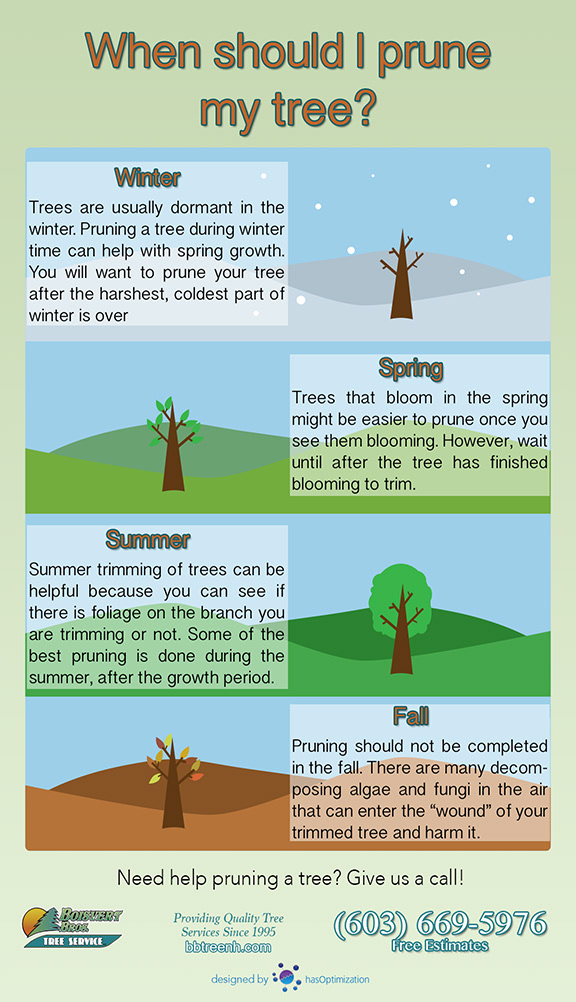Discover How To Cultivate A Durable Atmosphere Post-Tree Removal
Discover How To Cultivate A Durable Atmosphere Post-Tree Removal
Blog Article
Content Composed By-
When it comes to seasonal tree treatment, ensuring proper management prior to and after removal can substantially affect the health and wellness and looks of your landscape. By comprehending the needed actions associated with assessing tree wellness and getting ready for removal, you can proactively guard your building. Yet what regarding maintenance team to comply with when the tree is gone? Remain tuned to uncover the essential post-removal treatment actions that will certainly aid you cultivate a flourishing and lasting atmosphere for your trees.
Pre-Removal Tree Care
Prior to resolving the removal of a tree, it's critical to focus on pre-removal tree care. Beginning by analyzing the tree's wellness and structural integrity. Try to find indications of condition, bug infestations, or any architectural issues that might posture a safety and security danger during elimination. It's vital to speak with a licensed arborist to identify the most effective strategy.
Trimming dead or infected branches can avoid additional damages to the tree and make sure a smoother elimination process.
Furthermore, take into check here of eliminating the tree. Trees play a vital function in our ecosystem, so growing a new tree in a suitable location can aid balance out any type of loss. Make sure that you have the essential authorizations and permissions for tree removal, especially if the tree is secured by local guidelines.
Seasonal Maintenance Tips
Evaluating your tree's demands throughout the year is vital for its health and longevity. To maintain your trees in leading condition, follow these seasonal upkeep tips.
In spring, focus on pruning to get rid of dead or broken branches and encourage new development.
Summer asks for regular watering, particularly during droughts, to guarantee your tree remains hydrated.
As fall methods, keep an eye out for very early indicators of condition or stress and anxiety, and consider using compost to shield the roots during winter season.
In winter, beware when eliminating snow from branches to stop damage, and continue to monitor your tree's general health.
Keep in mind to readjust your treatment regular based on the certain needs of your tree varieties and local climate. By staying conscientious and aggressive throughout the periods, you can aid your trees flourish and thrive for many years to come.
Post-Removal Tree Care
To make sure the health of your landscape even after tree elimination, proper post-removal treatment is vital. After a tree is gotten rid of, it's essential to fill up the remaining opening with topsoil and small it to prevent settling. This will certainly aid preserve the honesty of the ground and prevent potential hazards in the future.
Take into consideration planting brand-new plant life in place of the removed tree to restore the balance and looks of your landscape. Consistently water the location to advertise the growth of new plants and prevent soil disintegration.
Examine the surrounding trees for any signs of disease or stress and anxiety that might have been triggered by the eliminated tree. Keep an eye out for parasites that may've been attracted to the previous tree and take safety nets to safeguard the staying greenery.
If required, consult with a professional arborist to examine the influence of the removal on the bordering trees and determine any type of added care required. By complying with these post-removal treatment steps, you can make certain the ongoing health and beauty of your landscape.
Final thought
To conclude, aggressive seasonal tree treatment is essential for maintaining the health and wellness and equilibrium of your landscape. By analyzing tree wellness, trimming, and consulting with an arborist before elimination, you can ensure a risk-free procedure. After elimination, filling the hole, planting new greenery, and routine watering will promote new development and avoid erosion. Bear in mind to examine surrounding trees for illness and look for additional care steps from an arborist to maintain your landscape growing.
